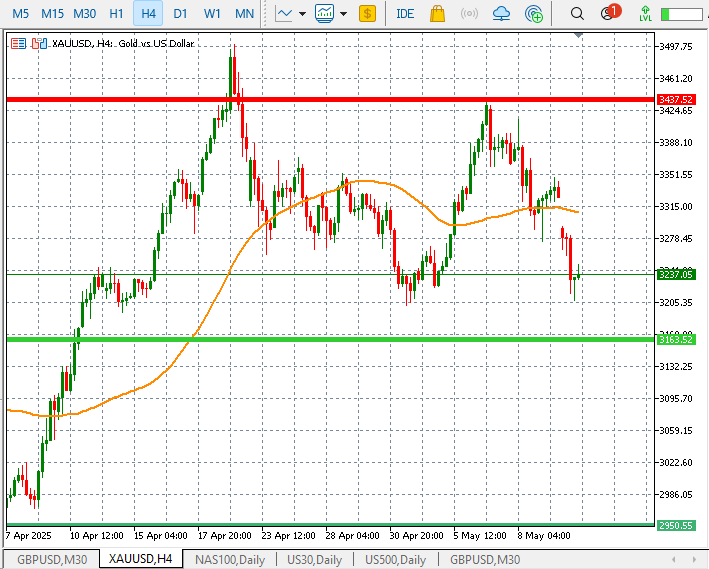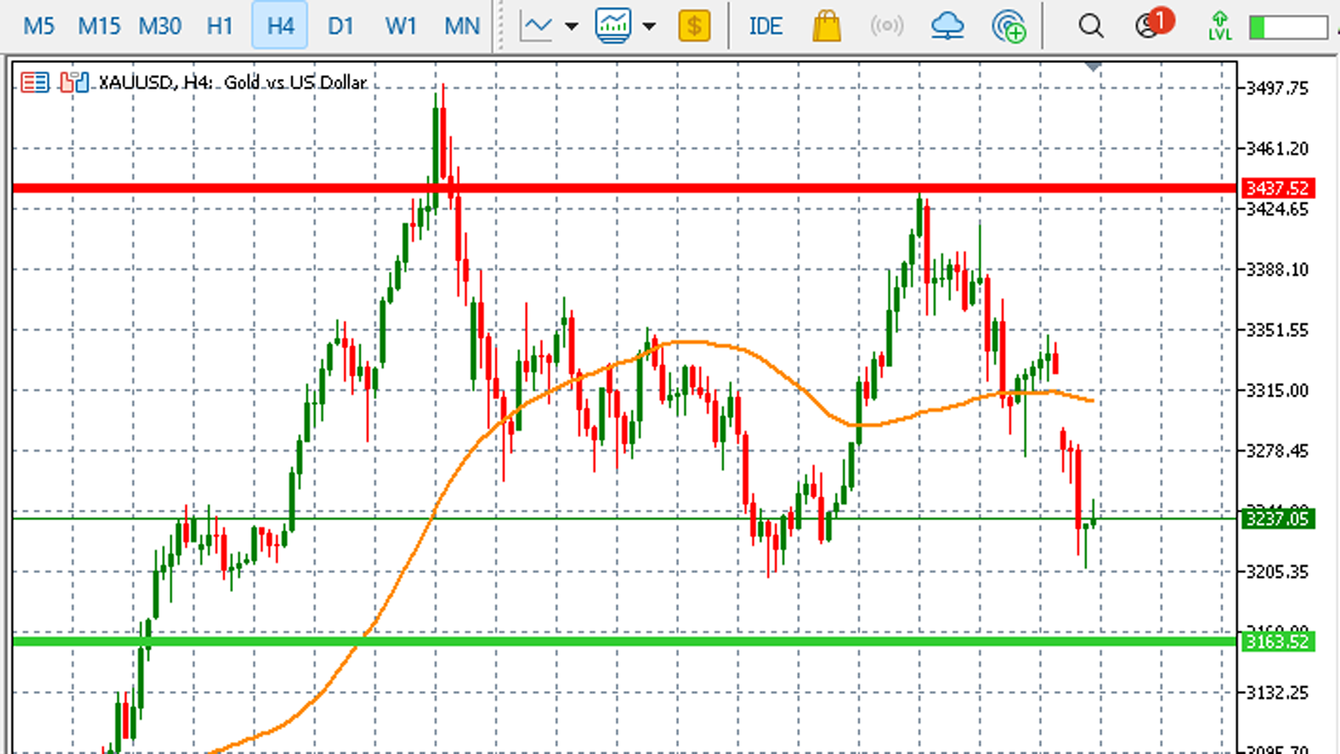By all appearances, gold has lost its shine—for now. On Monday, May 12, 2025, the yellow metal tumbled over 2%, dragged down by a broad risk-on sentiment flooding global markets. The cause? A cocktail of diplomacy, trade optimism, and President Trump’s rapid-fire declarations of geopolitical progress that, if taken at face value, could signal a new chapter of relative stability. But investors eyeing the longer game might want to ask: is this peace really built to last—or is gold quietly preparing for its next rally?
A Flurry of Promises: Trump as Market Mover
President Trump’s morning comments read like a diplomat’s dream. He praised a full ceasefire between India and Pakistan, voiced support for a Russia-Ukraine summit in Turkey, and lauded China for agreeing to curb the flow of fentanyl—promising they would be “rewarded” via trade concessions. Meanwhile, Trump doubled down on U.S. domestic manufacturing after a call with Tim Cook, hinted at historic progress in the Middle East, and vowed a crackdown on pharma profiteering.
This torrent of optimism painted a picture of a calmer, more cooperative world. Naturally, markets responded. U.S. equities surged, with the S&P 500 and Nasdaq both rising over 1%, as investors ditched defensive plays and dove headfirst into risk. Gold, the ultimate barometer of fear, buckled under pressure.
 Gold trading Chart by Avatrade
Gold trading Chart by Avatrade
But scratch beneath the surface, and the foundations of this optimism are far from secure.
Gold’s Retreat: A Reaction, Not a Reversal
Today’s gold slump—to around $3,212/oz—is more a symptom of market positioning than a reflection of true geopolitical resolution. Traders are pricing in peace before it's signed. The ceasefire between India and Pakistan is promising, but history tells us these situations are fragile. Russia and Ukraine may talk, but the last two years have proven that diplomacy without enforcement often amounts to little more than theatre. As for China, its promise to halt fentanyl shipments may have symbolic weight, but it hardly addresses the deeper frictions in tech, tariffs, and global power dynamics.
In short: the world is still far from stable, and gold’s role as a hedge hasn’t disappeared—it’s simply stepped out of the spotlight.
What’s Coming: CPI, Wages, Sentiment—and a Reality Check
Tomorrow, the narrative may begin to shift again.
Investors will be confronted with a wave of key economic data, including:
- UK Claimant Count Change and Average Earnings Index
- Germany’s ZEW Economic Sentiment Index
- U.S. Core CPI, CPI m/m, and CPI y/y
- Comments from Bank of England Governor Bailey
Each data point represents a potential jolt to gold prices. If inflation in the U.S. comes in hotter than expected, the narrative around rate cuts may cool quickly. That, in turn, could limit equity momentum and revive demand for inflation hedges like gold. Conversely, a soft CPI reading might extend the current rally in stocks, and deepen the temporary retreat in gold.
Yet inflation isn’t the only variable. Sentiment indicators like Germany’s ZEW and wage growth in the UK will provide clues as to how deeply entrenched economic resilience—or weakness—really is. Weak wage growth and poor sentiment could renew fears of stagflation, another bullish backdrop for gold.
Market Mood: A Risk-On Mirage?
Today’s price action reflects a market in relief mode, not one with newfound conviction. The rally in stocks and slump in gold are tied to rhetoric, not resolution. Markets love the idea of peace, but reality has a way of dragging sentiment back to earth.
Let’s not forget, even as Trump touts progress, he’s also warned of new tariffs if pharmaceutical companies don’t comply with his policies. His comment that “Europe is nastier than China” may trigger diplomatic discomfort in Brussels and reignite transatlantic tensions. These aren’t the words of someone who’s putting away the economic stick just yet.
The Takeaway: Don’t Count Gold Out
Gold may be down, but it’s not out. Today’s selloff reflects temporary euphoria, not lasting peace. The metal remains deeply relevant, especially as the inflation picture and global diplomacy evolve. If tomorrow’s economic data disappoints—or if any of Trump’s fragile peace overtures unravel—expect the flight to safety to resume swiftly.
Gold thrives on uncertainty. And while markets may be celebrating calm today, history suggests it rarely lasts long.
